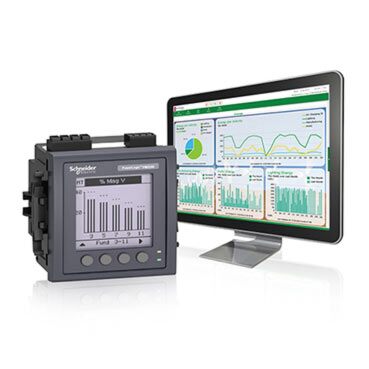Smart Energy, Smart Business: Embrace Power Monitoring and Control.
In the fast-paced world of power monitoring and control, achieving efficiency and ensuring safety are paramount.
With technological advancements, power monitoring and control systems have become increasingly sophisticated, offering real-time data and analytics to make informed decisions. From industrial plants to commercial buildings, moreover, these tools play a crucial role in optimizing energy usage, reducing costs, and enhancing overall safety.
Regardless of whether you hold the role of a facility manager, an energy consultant, or a business owner, this article offers valuable insights and practical advice for effectively managing and controlling power monitoring challenges. Stay tuned to unlock the true potential of your power infrastructure.
Importance of power monitoring and control
Efficient power monitoring and control is crucial for businesses across different industries. By closely monitoring power consumption and performance, organizations can identify areas of inefficiency and implement corrective measures. Additionally, effective power monitoring and control also ensure the safety of personnel and equipment by detecting faults and taking preventive actions promptly.
One of the primary advantages of power monitoring and control is the ability to optimize energy usage. By analyzing power data in real-time, organizations can identify energy wastage, and peak demand periods, and implement energy-saving strategies. This not only reduces utility costs but also contributes to sustainability efforts. Power monitoring and control systems also provide insights into power quality, helping organizations maintain stable and reliable operations.

Types of power monitoring and control technologies
It comprises several essential components that work together to provide accurate data and enable effective management. These components include:
1. Meters and Sensors: Meters and sensors are at the heart of any power monitoring and control system. They measure various parameters such as voltage, current, power factor, and harmonics. These devices are placed strategically throughout the power infrastructure to capture data accurately.
2. Data Acquisition System: The data acquisition system collects data from meters and sensors and converts it into a digital format for analysis. It acts as a bridge between the physical power infrastructure and the software applications used for monitoring and control.
3. Software Applications: Software applications provide a user-friendly interface to monitor and control the power infrastructure. These applications display real-time data, generate reports, and enable remote control of devices. Advanced software applications leverage machine learning and artificial intelligence algorithms to provide predictive analytics and automate certain control functions.
By understanding the key components of a power monitoring and control system, businesses can select the right technologies to implement in their infrastructure.
Ways to establish a system for monitoring and controlling power.
To maximize the benefits of a power monitoring and control system, businesses should consider the following best practices:
1. Set Realistic Goals: Clearly define the objectives you want to achieve through power monitoring and control. Set realistic targets for energy savings and power quality improvements.
2. Regular Data Analysis: Continuously analyze the data collected by the power monitoring and control system. Look for patterns, anomalies, and opportunities for optimization. Use historical data to identify long-term trends and plan for future requirements.
3. Implement Energy Management Strategies: Based on the insights from the data analysis, implement energy management strategies. This could include load shedding during peak demand periods, optimizing equipment schedules, or investing in energy-efficient technologies.
4. Maintenance and Calibration: Regularly maintain and calibrate the meters and sensors to ensure accurate data collection. Establish a preventive maintenance schedule to identify and rectify any issues promptly.
5. Collaboration and Communication: Foster collaboration between different departments and stakeholders involved in power monitoring and control. Encourage open communication and sharing of insights to drive continuous improvement.
Implementing these best practices can significantly enhance the effectiveness of a power monitoring and control system.
Contact Fronthill Limited today to learn more about how our solutions can assist you in optimizing your energy usage, reducing energy waste, and improving the reliability of your electrical equipment.
Have you read our recent blog post on predictive maintenance? Click here now.

